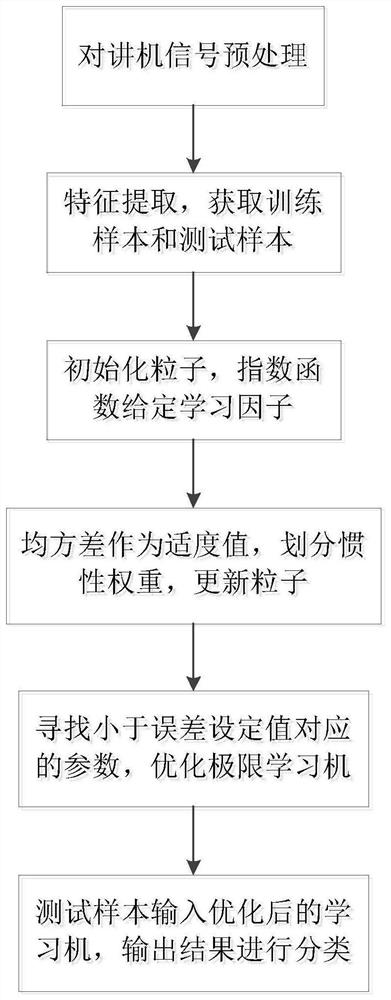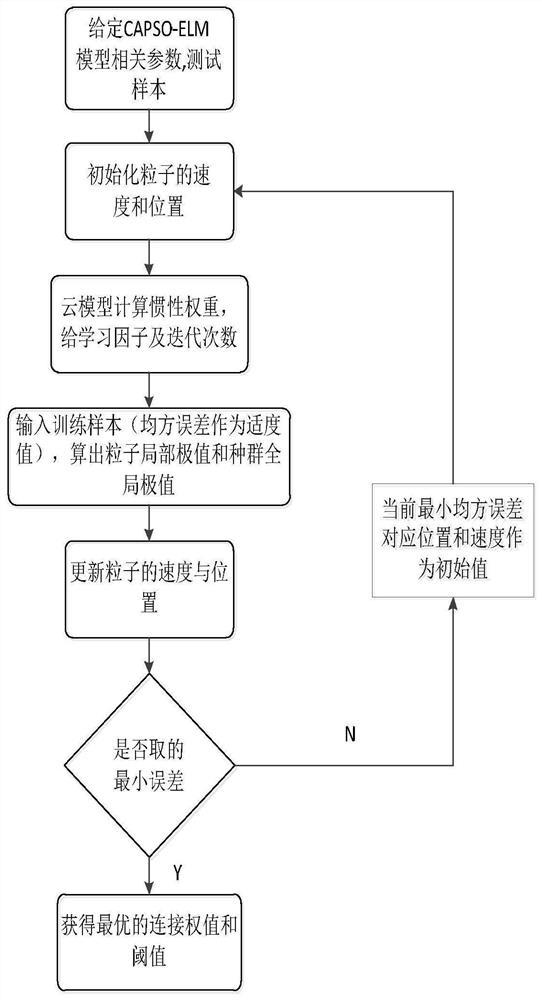Radiation source signal identification method of improved particle swarm extreme learning machine
An extreme learning machine and improved particle swarm technology, applied in the field of signal processing, can solve the problems that the recognition rate cannot meet the classification requirements, the network structure cannot be found, and the accuracy is not high.
- Summary
- Abstract
- Description
- Claims
- Application Information
AI Technical Summary
Problems solved by technology
Method used
Image
Examples
Embodiment Construction
[0037]Objects, advantages and features of the present invention will be illustrated and explained by the following non-limiting description of preferred embodiments. These embodiments are only typical examples of applying the technical solutions of the present invention, and all technical solutions formed by adopting equivalent replacements or equivalent transformations fall within the protection scope of the present invention.
[0038] The invention discloses a radiation source signal identification method for an improved particle swarm extreme learning machine, which is used in the field of radiation source signal identification such as radar, radio, and walkie-talkie. This method performs singular value decomposition and noise reduction on the walkie-talkie signal, and then extracts the sample entropy, permutation entropy, box dimension and information dimension in the time domain to form a feature vector, and uses the stability and normality characteristics of the cloud mod...
PUM
 Login to view more
Login to view more Abstract
Description
Claims
Application Information
 Login to view more
Login to view more - R&D Engineer
- R&D Manager
- IP Professional
- Industry Leading Data Capabilities
- Powerful AI technology
- Patent DNA Extraction
Browse by: Latest US Patents, China's latest patents, Technical Efficacy Thesaurus, Application Domain, Technology Topic.
© 2024 PatSnap. All rights reserved.Legal|Privacy policy|Modern Slavery Act Transparency Statement|Sitemap



